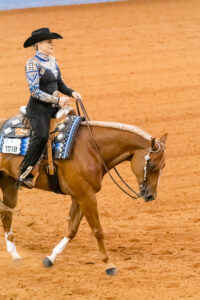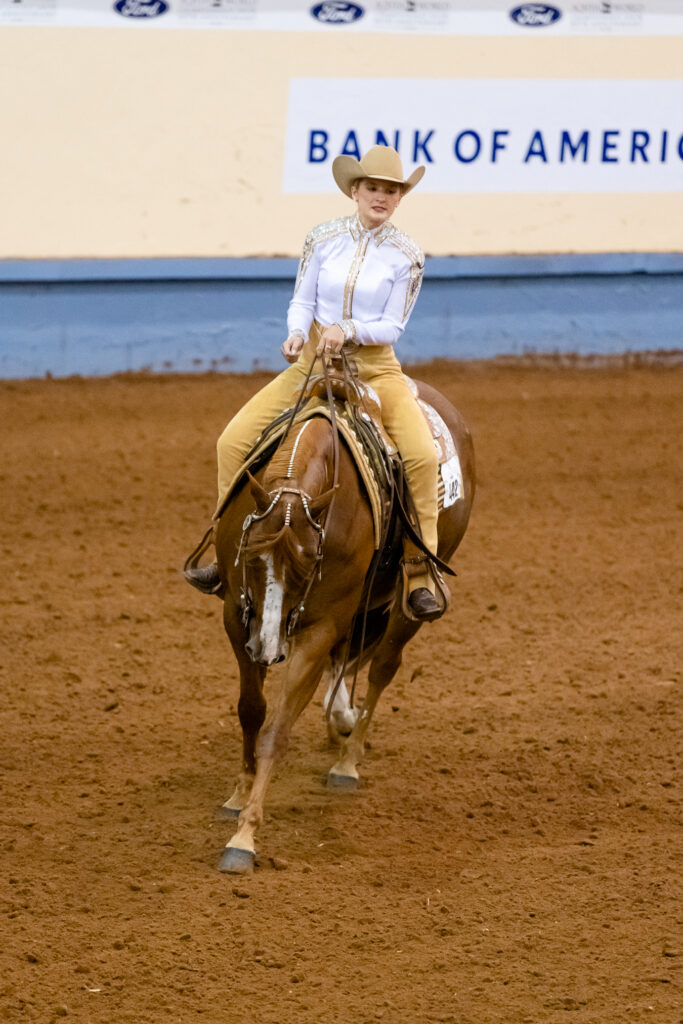From Paper to Performance with Jackie Krshka
Every all-arounder knows the feeling— the first time you lay eyes on the chosen pattern, your mind begins racing. “Good? Bad? Is my horse good at this? Oh wow, that corner looks tight! Yay! That’s our good way!” begins to flood your mind.

It’s easy to get overwhelmed or nervous about how to appropriately prepare for your pattern, especially if you have multiple patterns in a short amount of time. Jackie Krshka, a renowned trainer, clinician, and horsewoman from Yukon, Oklahoma, possesses a broad band of knowledge in the industry, spanning multiple disciplines from Equitation on the Flat to Working Cow Horse and numerous others in between. She has had great success in the show pen as a professional, and her students dominate the arena every time they walk through the gates. Krshka shares the secrets, unwritten rules, and tips for amateurs to successfully prepare, practice, and perform patterns. When Krshka’s students see a pattern for the first time, whether it is a week in advance or an hour before they go, they immediately read over the pattern and compare it to the legend (written explanation) provided.

She explains, “If there is anything confusing, [in the pattern] we go over that. If you are at a show and find something of discrepancy, go to the office and ask the judge for an explanation.” Amateurs should never be too intimidated or shy to approach show management if a pattern has a mistake between the written word and the drawing. “Most times it’s a simple mistake that the judge will be happy to clarify.” After clarifying and reading through the pattern, Krshka, likes to look at the overall pattern and then evaluate it with regard to the student and horse’s strong points and weaknesses. “I make sure the rider is clear on areas to enhance their strong points and perhaps be more conservative in weak areas. Nine times out of 10, consistency and execution without faults will help you win a prize.”
Krshka explains that it is okay to look at a pattern and see weakness and strengths. She gives the example, “if the pattern says lope left lead large circle, transition to collected lope small circle, then lead change, and I know my horse has excellent transitions but needs support in the lead change, I will tell my student to push really hard in the large fast and small slow to plus that maneuver and then take care of the horse in the lead change, in order to not set it up for a potential penalty.” When it comes to actually schooling the pattern, Krshka believes in practicing each element separately and then put a few elements together. “When I feel things have come together we will work on the entire pattern. She stresses that she never allows her students to go through the pattern in completion more than twice. She believes that if exhibitors practice the pattern multiple times, it leads to opportunities for the horse to start anticipating maneuvers. This could ultimately cause penalties in the pattern and cause an overall poor picture, which is completely opposite of the exhibitor’s intentions in practicing the pattern multiple times.

She also adds, “if there is a lead change, I will seldom do that repeatedly, to avoid anticipation by the horse. If we do practice the lead change, it will never be in the exact same place as the pattern requires.” Krshka suggests to always practice the elements of the pattern, and even the pattern itself (remember only twice), more open than how you anticipate the pattern to be set up by the judges. “Do not be naïve about it,” she warns, “make sure you reinforce steering so that you have the ability to bring it in if the pattern is set tighter.” “It’s always important to think ahead,” explains Krshka. When her students visualize patterns she encourages them not to think of the pattern as a whole but to think a few maneuvers in advance. Krshka starts teaching pattern placement techniques “at home” with all of her students. “After the horse and rider are warmed up, I start calling out various maneuvers like ‘extend trot, lope left lead, stop and turn 270 left’, which makes them think on the fly. It helps me determine how ready they are to go to a show and compete, while they learn to ride though any mistakes and bobbles they will inevitably encounter. We always talk about their mistakes and troubleshoot the issues so they will know how to fix the problem before it arises the next time.”
As an AQHA judge, Krshka always draws up her own patterns. Before submitting them to a show, she rides through them to make sure the dimensions are correct and all maneuvers are physically doable. She also draws up unique patterns for her students to practice at home that feature core fundamentals to advanced maneuvers in order to prepare her students for even the toughest patterns at the biggest shows.

Reading, practicing, and understanding the pattern placed in front of you is undoubtedly important. But Krshka stresses that the most important element to guarantee success in a pattern class is the rider’s ability to feel the horse and have a connection between your body and the horse. “A rider should be able to execute a pattern and maintain good form,” declares Krshka. “However, if the trainer gets the horse on auto pilot and the rider is just up there…when things don’t go perfectly they do not have the skill set to ride through the potential problem and show ‘horsemanship skills’.” She continues to advocate true horsemanship, which is required in order to succeed in any all-around events. It is not about “the person that can sit the stillest and not move their body or hand,” but rather Horsemanship and other all-around classes are about how well a horse and rider can connect, complete and perform a series of maneuvers that make up a pattern.





